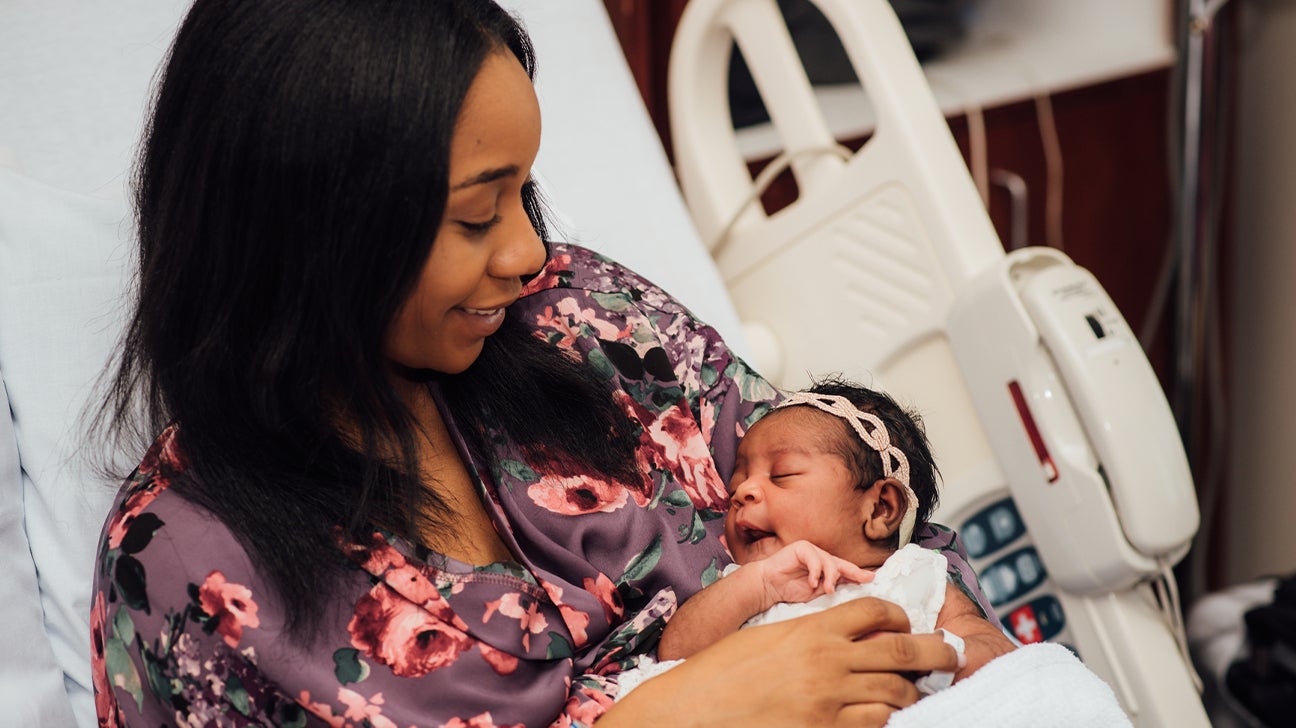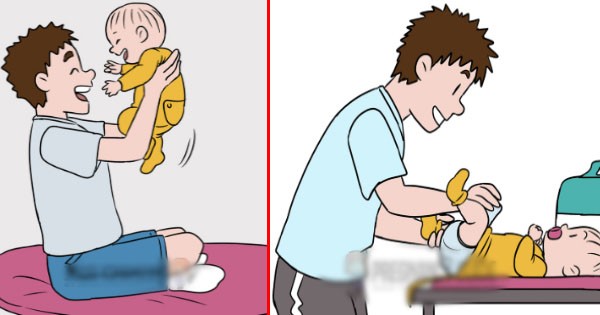
⭕️🔥𝐓𝐇𝐄 𝐑𝐈𝐍𝐆 𝐎𝐅 𝐏𝐎𝐖𝐄𝐑🔥⭕️
❍
For many mothers and birthing folks, this is often the scariest part of giving birth.
❍
As your baby emerges and begins to stretch the vaginal opening, you will experience a burning/stinging sensation that we refer to as “the ring of fire” but I like to call it 𝐓𝐇𝐄 𝐑𝐈𝐍𝐆 𝐎𝐅 𝐏𝐎𝐖𝐄𝐑.

❍
This sensation does not last long and it’s usually followed by a feeling of numbness as the baby’s head stretches the vaginal tissues so thin that the vaginal nerves get blocked.
❍
When the ring of power starts:
💚slow down
💚don’t push, let the contractions do the work
💚allow your perineum to stretch slowly, your provider can help by giving your perineum some support or you can do it yourself
💚don’t hold your breath, focus on breathing techniques and/or moaning
💚lean back and try to go limp
💚relax your pelvic floor as much as possible
💚utilize warm water
❍
-Love,
Flor Cruz




The Ring Of Power


Childbirth is an extraordinary journey marked by difficulty, challenges, and profound experiences for women. The process of giving birth is often characterized by immense physical and emotional exertion, making it one of the most intense and demanding events in a woman’s life.
The pain and discomfort associated with childbirth are undeniable. The body undergoes significant stress as it navigates the intricate stages of labor, from the initial contractions to the final moments of delivery. The sheer physical toll is accompanied by a spectrum of emotions, ranging from anticipation and excitement to anxiety and fear.

The agony of labor is, however, interwoven with the strength and resilience of women. Throughout history, women have demonstrated remarkable courage and endurance during childbirth. The body’s ability to adapt and endure the rigors of labor is a testament to the marvels of human physiology.
Beyond the physical aspects, the emotional journey during childbirth is equally arduous. The anticipation, uncertainty, and the realization of the impending responsibility weigh heavily on the minds of expectant mothers. The support of partners, family, and healthcare professionals plays a crucial role in alleviating some of the emotional burdens associated with childbirth.

The process of bringing new life into the world is undoubtedly challenging, but it is also transformative. The pain and difficulties of childbirth give way to the profound joy and fulfillment of holding a newborn in one’s arms. The sacrifice and endurance required during labor become the foundation of a unique and unbreakable bond between mother and child.
In the end, while the journey of childbirth is undoubtedly marked by its difficulties, it is also a testament to the strength, resilience, and beauty inherent in the miracle of life. Each woman’s experience is a unique narrative, filled with both struggles and triumphs, shaping not only the birth of a child but also the emergence of a new mother.
Dealing With Pain During Childbirth
Learning all you can about labor and delivery is one of the best ways to help you manage the pain of childbirth when the time comes.

Pain During Labor and Delivery
Pain during labor is caused by contractions of the muscles of the uterus and by pressure on the cervix. This pain can be felt as strong cramping in the abdomen, groin, and back, as well as an achy feeling. Some women experience pain in their sides or thighs as well.
Other causes of pain during labor include pressure on the bladder and bowels by the baby’s head and the stretching of the birth canal and vagina.
Pain during labor is different for every woman. It varies widely from woman to woman and even from pregnancy to pregnancy.
It’s often not the pain of each contraction on its own that women find the hardest, but the fact that the contractions keep coming — and that as labor progresses, there is less and less time between contractions to relax.

Preparing Yourself
To help with pain during labor, here are some things you can start doing before or during your pregnancy:
Regular and reasonable exercise (that your doctor says is OK) can help strengthen your muscles and prepare your body for the stress of labor. Exercise also can increase your endurance, which will come in handy if you have a long labor. The important thing to remember with any exercise is not to overdo it — and this is especially true if you’re pregnant. Talk to your doctor about what he or she considers to be a safe exercise plan for you.
If you and your partner attend childbirth classes, you’ll learn different techniques for handling pain, from visualization to stretches designed to strengthen the muscles that support your uterus. The two most common childbirth philosophies in the United States are the Lamaze technique and the Bradley method.
The Lamaze technique is the most widely used method in the United States. The Lamaze philosophy teaches that birth is a normal, natural, and healthy process and that women should be empowered to approach it with confidence. Lamaze classes educate women about the ways they can decrease their perception of pain, such as through relaxation techniques, breathing exercises, distraction, or massage by a supportive coach. Lamaze takes a neutral position toward pain medicine, encouraging women to make an informed decision about whether it’s right for them.
The Bradley method (also called Husband-Coached Birth) emphasizes a natural approach to birth and the active participation of the baby’s father as birth coach. A major goal of this method is the avoidance of medicines unless absolutely necessary. The Bradley method also focuses on good nutrition and exercise during pregnancy and relaxation and deep-breathing techniques as a method of coping with labor. Although the Bradley method advocates a medicine-free birth experience, the classes do discuss unexpected complications or situations, like emergency cesarean sections.

Medicine-free ways to handle pain during labor include:
- hypnosis
- yoga
- meditation
- walking
- massage or counterpressure
- changing position
- taking a bath or shower
- listening to music
- distracting yourself by counting or performing an activity that keeps your mind otherwise occupied
Pain Medicines
A variety of pain medicines can be used during labor and delivery, depending on the situation. Many women rely on such medicines, and it can be a huge relief when pain is quickly eased and energy can be focused on getting through the contractions. Talk to your health care provider about the risks and benefits of each type of medicine.
Analgesics. Analgesics ease pain, but don’t numb it completely. They don’t affect sensation or muscle movement. They can be given many ways. If they are given intravenously (through an IV into a vein) or through a shot into a muscle, they can affect the whole body. These medicines can cause side effects in the mother, including drowsiness and nausea. They also can have effects on the baby.
Regional anesthesia. This is what most women think of when they consider pain medicine during labor. By blocking the feeling from specific regions of the body, these methods can be used for pain relief in both vaginal and cesarean section deliveries.
Epidurals, a form of local anesthesia, relieve most of the pain from the entire body below the belly button, including the vaginal walls, during labor and delivery. An epidural involves medicine given by an anesthesiologist through a thin, tube-like catheter that’s inserted in the woman’s lower back. The amount of medicine can be increased or decreased according to a woman’s needs. Very little medicine reaches the baby, so usually there are no effects on the baby from this method of pain relief.
Epidurals do have some drawbacks — they can cause a woman’s blood pressure to drop and can make it difficult to pee. They can also cause itching, nausea, and headaches in the mother. The risks to the baby are minimal, but include problems caused by low blood pressure in the mother.
Tranquilizers. These drugs don’t relieve pain, but they may help to calm and relax women who are very anxious. Sometimes they are used along with analgesics. These drugs can have effects on both the mother and baby, and are not often used. They also can make it difficult for women to remember the details of the birth. Discuss the risks of tranquilizers with your doctor.
:max_bytes(150000):strip_icc():focal(999x0:1001x2)/life-after-birth-5-2000-d7d1f58269c148e1aaf5fbfb2ccc251f.jpg)
Natural Childbirth
Some women choose to give birth using no medicine at all, relying instead on relaxation techniques and controlled breathing for pain. If you’d like to experience childbirth without pain medicine, discuss this with your health care provider.
Things to Consider
Here are some things to think about when considering pain control during labor:
- Medicines can relieve much of your pain, but probably won’t relieve all of it.
- Labor may hurt more than you expected. Some women who had said they want no pain medicine whatsoever end up changing their minds when they’re actually in labor.
- Some medicines can affect your baby, making the baby drowsy or causing changes in the heart rate.

Talking to Your Health Care Provider
You’ll want to review your pain control options with the person who’ll be delivering your baby. Find out what’s available, how effective they’re likely to be, and when it’s best not to use some medicines.
If you want to use pain-control methods other than medicine, make sure your health care provider and the hospital staff know. You might want to also consider writing a birth plan that makes your preferences clear.
Remember, many women make decisions about pain relief that they abandon — often for very good reason — at the last minute. Your ability to endure the pain of childbirth has nothing to do with your worth as a mother. By preparing and educating yourself, you can be ready to decide what pain management works best for you.
















































